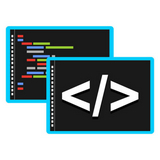函数契约编程通过类型约束和运行时断言确保输入输出符合预期,提升代码健壮性。使用TypeScript进行静态类型检查,结合运行时断言验证逻辑条件,可有效防止非法参数引发错误。通过封装通用断言工具或使用Zod等Schema库,能统一校验规则,增强代码可读性和维护性。JSDoc可用于非TypeScript项目提供文档提示。契约作为“活文档”明确函数边界,降低调试难度,提升团队协作效率与重构信心,尽管初期增加开发成本,但长期显著减少维护负担,是应对JavaScript动态特性风险的有效实践。

在JavaScript中,函数契约编程(Contract Programming)的核心思想是为函数定义明确的“契约”,即它所期望的输入(前提条件)和它承诺的输出(后置条件)。通过类型约束和运行时断言来验证这些前提条件,我们能显著提升代码的健壮性与可维护性,有效避免因不符合预期的输入而导致的运行时错误。这就像是给函数加上了一道“安检”,确保只有合格的“乘客”才能进入,从而让函数内部的逻辑可以更安心地执行。
要实践JS函数契约编程,我们通常会结合静态类型检查工具(如TypeScript)和运行时断言机制。静态类型检查在编译阶段捕获类型错误,而运行时断言则处理那些无法通过静态分析验证的逻辑或值约束。
具体来说,我们可以这样做:
利用TypeScript进行类型约束: 这是最直接且强大的方式。通过为函数的参数和返回值定义明确的接口或类型,TypeScript会在开发阶段就指出潜在的类型不匹配问题。这不仅提升了代码的可读性,也为函数提供了第一层“契约”保障。
interface User {
id: string;
name: string;
age: number;
}
function updateUserAge(user: User, newAge: number): User {
// ... 在这里可以假设user和newAge都符合类型要求
// 但还需要运行时断言来确保newAge的逻辑合理性
if (newAge <= 0 || newAge > 150) {
throw new Error("Invalid age: age must be between 1 and 150.");
}
return { ...user, age: newAge };
}实现运行时断言: 静态类型检查无法捕获所有逻辑错误,比如一个数字必须是正数,或者一个数组不能是空的。这时,我们需要在函数入口处添加运行时断言。这些断言函数通常会在条件不满足时抛出错误,中断执行。
function assert(condition, message) {
if (!condition) {
throw new Error(message || "Assertion failed");
}
}
function processOrder(orderId, quantity) {
// 前提条件:orderId 必须是字符串且非空
assert(typeof orderId === 'string' && orderId.trim() !== '', "Order ID must be a non-empty string.");
// 前提条件:quantity 必须是正整数
assert(Number.isInteger(quantity) && quantity > 0, "Quantity must be a positive integer.");
// ... 核心业务逻辑,现在可以放心地处理 orderId 和 quantity 了
console.log(`Processing order ${orderId} with quantity ${quantity}`);
return { success: true, orderId, quantity };
}
// 示例调用
try {
processOrder("ORD123", 5); // 正常
// processOrder("", 5); // 抛出错误: Order ID must be a non-empty string.
// processOrder("ORD123", -2); // 抛出错误: Quantity must be a positive integer.
} catch (e) {
console.error(e.message);
}结合JSDoc进行文档化(非TypeScript项目): 如果项目不使用TypeScript,JSDoc也能提供一些类型提示和契约描述,虽然它不是强制性的,但对开发工具和代码阅读者来说非常有帮助。
/**
* 更新用户年龄。
* @param {object} user - 用户对象。
* @param {string} user.id - 用户ID。
* @param {string} user.name - 用户名。
* @param {number} user.age - 用户当前年龄。
* @param {number} newAge - 用户的新年龄,必须是1到150之间的整数。
* @returns {object} 更新后的用户对象。
* @throws {Error} 如果 newAge 不符合范围。
*/
function updateUserAgePlainJS(user, newAge) {
// JSDoc 提供了文档,但运行时仍需断言
assert(typeof user === 'object' && user !== null, "User object is required.");
assert(typeof user.id === 'string', "User ID must be a string.");
assert(typeof user.name === 'string', "User name must be a string.");
assert(typeof user.age === 'number', "User age must be a number.");
assert(Number.isInteger(newAge) && newAge > 0 && newAge <= 150, "New age must be an integer between 1 and 150.");
return { ...user, age: newAge };
}JavaScript作为一门动态、弱类型语言,其灵活性在带来开发效率的同时,也埋下了不少运行时错误的隐患。我个人在维护一些老旧JS项目时,经常会遇到函数接收到意料之外的参数,导致内部逻辑崩溃,而这种问题往往只在特定场景下复现,排查起来非常耗时。函数契约编程,或者说防御性编程,正是为了解决这些痛点而生。
它主要解决以下几个问题:
undefined
null
TypeError
ReferenceError
有效实施类型约束和运行时断言,并不仅仅是简单地添加几行代码,它更像是一种编程习惯和思维模式的转变。从我的经验来看,这需要一套行之有效的方法论和工具链。
首先,TypeScript是首选。如果项目允许,引入TypeScript能带来静态类型检查的巨大优势。它在编译阶段就能捕获大量的类型不匹配问题,这比运行时断言更早、更高效。
// types.ts
export interface Product {
id: string;
name: string;
price: number;
stock: number;
}
// product-service.ts
import { Product } from './types';
function getProductById(productId: string): Product | undefined {
// ... 实际获取逻辑
return { id: productId, name: "Example Product", price: 99.99, stock: 10 };
}
function updateProductStock(productId: string, quantityChange: number): Product {
// TypeScript 已经确保了 productId 是 string,quantityChange 是 number
const product = getProductById(productId);
if (!product) {
throw new Error(`Product with ID ${productId} not found.`);
}
// 运行时断言:确保 quantityChange 是有效的正负整数
if (!Number.isInteger(quantityChange) || quantityChange === 0) {
throw new Error("Quantity change must be a non-zero integer.");
}
const newStock = product.stock + quantityChange;
// 运行时断言:确保库存不会变为负数
if (newStock < 0) {
throw new Error(`Insufficient stock for product ${productId}. Current stock: ${product.stock}, requested change: ${quantityChange}`);
}
product.stock = newStock;
return product;
}在这里,TypeScript处理了基础类型,而
if
其次,建立一套统一的断言工具函数。不要在每个函数里都写
if (!condition) throw new Error(...)
assert
assertString
assertNumber
assertPositive
// utils/assertions.js
function assert(condition, message) {
if (!condition) {
throw new Error(message || "Assertion failed.");
}
}
function assertType(value, typeName, paramName = "value") {
assert(typeof value === typeName, `${paramName} must be a ${typeName}, got ${typeof value}.`);
}
function assertPositive(value, paramName = "value") {
assertType(value, 'number', paramName);
assert(value > 0, `${paramName} must be positive.`);
}
// service.js
import { assertType, assertPositive } from './utils/assertions';
function calculateDiscount(price, discountPercentage) {
assertPositive(price, "price");
assertType(discountPercentage, 'number', "discountPercentage");
assert(discountPercentage >= 0 && discountPercentage <= 1, "discountPercentage must be between 0 and 1.");
return price * (1 - discountPercentage);
}这种模式让断言代码变得可复用,也更容易维护。
再者,考虑使用Schema验证库。对于更复杂的对象结构验证,手动编写断言会变得非常繁琐。
Zod
Yup
Joi
import { z } from 'zod';
const OrderSchema = z.object({
id: z.string().uuid("Order ID must be a valid UUID."),
items: z.array(z.object({
productId: z.string().min(1, "Product ID cannot be empty."),
quantity: z.number().int().positive("Quantity must be a positive integer.")
})).min(1, "Order must contain at least one item."),
totalAmount: z.number().positive("Total amount must be positive.")
});
function processValidatedOrder(orderData) {
const validatedOrder = OrderSchema.parse(orderData); // 如果验证失败,会抛出 ZodError
console.log("Processing order:", validatedOrder);
// ... 核心业务逻辑,现在可以完全信任 validatedOrder 的结构和数据有效性
return { success: true, order: validatedOrder };
}
try {
processValidatedOrder({
id: "a1b2c3d4-e5f6-7890-1234-567890abcdef",
items: [{ productId: "PROD001", quantity: 2 }],
totalAmount: 120.50
});
// processValidatedOrder({ id: "invalid-uuid", items: [], totalAmount: -10 }); // 抛出 ZodError
} catch (error) {
console.error("Order validation failed:", error.errors);
}这在处理外部API输入、用户提交数据等场景时尤其强大。
最后,注意断言的时机和粒度。通常,断言应该放在函数的最开始,作为其“入口守卫”。断言的粒度要适中,既要覆盖关键的业务逻辑约束,又不能过度细化到影响代码可读性和性能。我发现,很多时候,一些基础的类型和范围检查就足以捕获大部分问题。
从我多年的开发经验来看,函数契约编程对项目的长期健康和团队协作有着深远而积极的影响,它不仅仅是避免bug那么简单,更是一种提升团队整体开发效率和代码质量的策略。
首先,显著降低了“未知因素”。在大型项目中,函数调用链可能非常深,一个参数在源头出问题,可能会在下游的某个不相关的函数中引发崩溃。没有契约,每个函数都像是在黑暗中摸索,不知道上游会给什么。有了契约,每个函数都明确了自己的“边界”,知道它能处理什么,不能处理什么。这大大减少了调试的复杂性,因为错误会在离问题最近的地方被捕获。
其次,提升了团队协作效率。当多个开发者共同维护一个大型代码库时,函数契约成为了他们之间无声的“协议”。一个开发者编写的函数,其参数和返回值类型、值范围等都通过契约清晰地表达出来,其他开发者在调用时无需猜测,也无需反复沟通。这就像是制定了统一的交通规则,大家都能按照规则行事,减少了摩擦和误解。新成员加入团队时,通过阅读这些契约,也能更快地理解代码库的结构和各个模块的功能。
再者,增强了代码的可读性和可维护性。一个带有明确类型和断言的函数,它的意图是自文档化的。即使没有额外的注释,开发者也能从契约中推断出函数的功能和使用方式。这使得代码更容易被理解、修改和扩展。当需要重构某个模块时,契约的存在也提供了一层安全网,只要重构后的函数仍然满足其契约,外部调用者就不需要做任何修改,大大降低了重构的风险。
此外,促使开发者养成防御性编程的习惯。契约编程鼓励开发者在编写代码时,就主动思考各种可能的异常情况和非法输入,并为其设计相应的处理机制。这种前瞻性的思维模式,能从根本上提升代码的质量,减少后期维护的负担。它让我们从“希望不会出错”转变为“确保不会出错”。
当然,实施契约编程也并非没有成本。它会增加一些初始的开发工作量,尤其是在为现有代码库添加契约时。但从长远来看,这些投入通常都能通过减少bug、加快调试、提升团队协作效率等方式获得丰厚的回报。我倾向于将其视为一种“前期投入”,为了换取后期更顺畅、更可靠的开发体验。
以上就是JS 函数契约编程实践 - 使用类型约束与断言验证函数前提条件的详细内容,更多请关注php中文网其它相关文章!

编程怎么学习?编程怎么入门?编程在哪学?编程怎么学才快?不用担心,这里为大家提供了编程速学教程(入门课程),有需要的小伙伴保存下载就能学习啦!

Copyright 2014-2025 https://www.php.cn/ All Rights Reserved | php.cn | 湘ICP备2023035733号